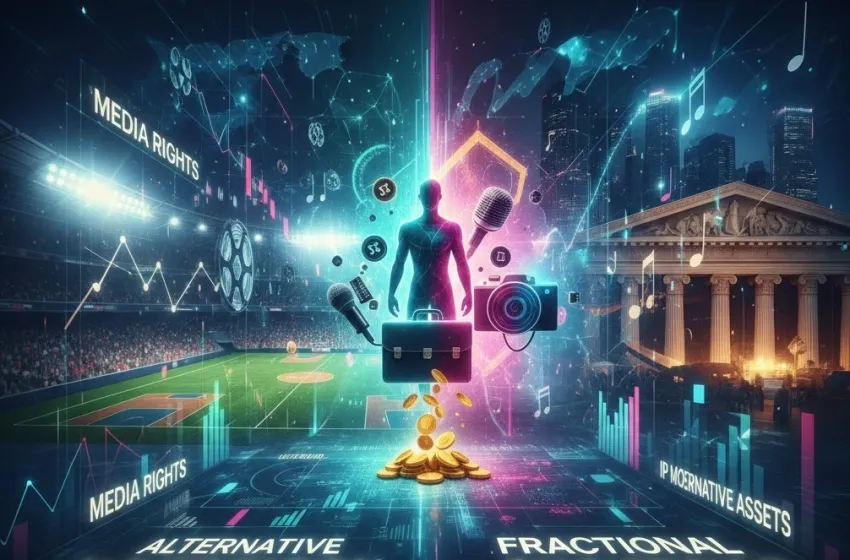Explore the financialization of sports & entertainment, driven by private equity.
The world of sports and entertainment, once dominated by passionate owners, local fanbases, and traditional business models, has undergone a dramatic transformation. This shift is the **financialization** of the industry—a process where financial logic, instruments, and actors increasingly drive strategic decisions and value creation. No longer are sports teams or music catalogs merely cultural entities; they are now viewed and traded as resilient, high-growth, and emotionally-charged alternative assets, attracting trillions of dollars from institutional investors, private equity firms, and sophisticated capital markets.
This fundamental revaluation is reshaping ownership structures, revolutionizing revenue streams, and creating new investment opportunities far beyond traditional stocks and bonds.
The Evolving Landscape of Sports Finance
**Sports finance** has moved far beyond the simple calculus of ticket sales and merchandise. It is now a complex, globalized field focused on maximizing the value of intangible assets and creating predictable, long-term revenue streams. The escalating cost of acquiring and operating a top-tier sports franchise—with NFL teams, for instance, averaging multi-billion dollar valuations—has necessitated an influx of capital and a radical shift in financing models.
From Debt to Equity Models: A Capital Structure Revolution
Historically, many sports organizations, particularly European football clubs, relied heavily on **debt** financing to bridge the gap between revenue and expenditure, fund expensive player transfers, or finance large infrastructure projects like stadium construction. This often involved bank loans, bond issuances, or debt factoring—selling future revenue streams (like transfer fee installments or broadcasting rights) for immediate cash, which carries significant repayment pressure and financial risk.
However, the industry is now experiencing a profound transition toward **equity models**, largely driven by the entrance of private equity (PE) and other institutional investors.
- Private Equity and Minority Stakes: Leagues like the NFL, NBA, and MLB have relaxed ownership rules, allowing PE firms to acquire **minority equity stakes** in teams. These investments provide franchises with an immediate capital injection that does not require fixed, periodic repayments. The investors' return is tied directly to the growth and eventual sale (exit) of their stake at a higher valuation. This aligns the financial interests of the owners and investors around long-term value creation.
- Infrastructure Investment: Instead of relying on municipal bonds or heavy debt for large-scale projects, new stadiums and surrounding mixed-use real estate developments (Sports-Anchored Mixed-Use Districts or SMDs) are increasingly financed by private equity. The equity partners invest in the entire development, securing a stake in a diversified, long-term revenue stream—from retail, dining, hospitality, and real estate—that stabilizes income beyond match-day volatility.
- Preferred Equity: This hybrid instrument offers investors a blend of debt-like fixed returns alongside an equity upside. For example, a PE firm might provide a substantial capital injection into a club in exchange for a preferred equity stake, which pays a fixed dividend but also allows the investor to benefit from the capital appreciation of the club's value. This structure provides capital without the immediate, stringent repayment timeline of pure debt.
This move to equity signals a long-term confidence in the asset class, providing the stability and patient capital required for massive growth initiatives.
The Core Pillars of Financialization
The financial value of sports and entertainment is intrinsically tied to several interconnected, monetizable assets. Understanding these pillars is key to grasping the industry's financial evolution.
Media Rights Investment: The Content King
The most significant driver of soaring valuations is the massive growth in **media rights investment**. Live sports remain one of the few forms of content that command simultaneous, high-volume viewership globally, making them invaluable to broadcasters and streaming platforms.
- Massive Long-Term Deals: Major leagues like the NFL and NBA have secured multi-billion dollar, multi-year broadcasting deals, creating a predictable, guaranteed, and escalating annual contracted revenue stream for their franchises.
- Streaming Wars: The entry of tech giants and streaming services (Amazon, Apple, etc.) into the live sports bidding wars has intensified competition and driven up the price of rights exponentially.
- Content as Currency: Beyond live games, the rights to create documentary series and behind-the-scenes content—such as the transformative "Welcome to Wrexham" series—demonstrate the value of controlling the narrative and turning a sports entity's story into highly valuable intellectual property (IP).
Intellectual Property (IP) Monetization and Fractional Ownership
**Intellectual property (IP) monetization** is central to financialization. This includes trademarks, logos, team names, athletes' images, music copyrights, and film libraries. Financial engineering is now applied to these intangible assets to unlock new pools of capital.
- Securitization of Royalties: In the music industry, artists or rights holders can sell the rights to future royalty payments from their song catalogs (IP) to investment funds. These rights are then securitized, packaged as bonds, and sold to investors. This allows the creator to receive a large upfront lump sum, while investors gain a long-term, predictable income stream derived from consumption (streaming, radio play).
- Athlete Contracts as Assets: **Athlete contracts** are increasingly viewed as complex financial instruments. Beyond the fixed salary, the rights to an athlete's name, image, and likeness (NIL) are valuable IP. New financial vehicles, sometimes tied to tokenization or NFTs, are emerging to allow investors to purchase a **fractional stake** in an athlete's future earnings or brand value.
- Fractional Team Ownership: The high barrier to entry for full team ownership has led to the rise of **fractional team ownership**. While large-scale institutional ownership focuses on minority stakes in the team entity itself, direct-to-consumer platforms are emerging to offer micro-investments in related assets, such as specific merchandise IP or parts of a player's contract. This democratizes access and broadens the investor base, further solidifying the asset's financial status.
Investment in Alternative Assets: Beyond the Traditional Portfolio
The convergence of sports, music, and entertainment creates a new, powerful category of alternative assets. These assets are attractive to institutional investors, sovereign wealth funds, and sophisticated private clients for several key reasons:
- Low Correlation: Sports and entertainment revenues often show low correlation with the volatility of the stock market. Fan loyalty, global media deals, and long-term sponsorship contracts provide stable, non-cyclical, and resilient cash flows, making them excellent diversifiers in a traditional investment portfolio.
- Inflation Hedging: The value of IP, like a classic song catalog or media rights in a major sports league, tends to appreciate with inflation, as the commercial value of the underlying content increases.
- Monopolistic Characteristics: Professional **sports leagues** often operate with limited competition (a regional monopoly), further ensuring a resilient market position and stable revenue growth.
Entertainment's Financialization: The Case of Music and Film
The financialization trend is equally powerful in the entertainment sector:
- Music Catalog Acquisitions: Private equity and specialist funds have spent billions acquiring the publishing rights and master recordings of legendary artists. These assets are now managed like real estate portfolios, with returns generated by maximizing streaming revenue, synchronization licenses (use in films/ads), and new monetization strategies.
- Film and TV Library Securitization: Similar to music, major studios can securitize the future residual income from their deep libraries of films and television shows. The predictable, recurring nature of these residual payments—from reruns, streaming licenses, and international distribution—makes them ideal for packaging into investment-grade securities.
Strategic Implications and the Future Outlook
The financialization trend, while unlocking massive capital and unprecedented growth, is not without its critics and complexities. The core tension lies between the cold, rational logic of finance—focused on maximizing shareholder value and predictable returns—and the passionate, community-driven nature of sport and art.
- The Global Market for Talent and IP: The financial tools and capital flow enable global scouting, sophisticated player trading, and the acquisition of top **athlete contracts** and high-value entertainment **intellectual property (IP) monetization** from around the world. This creates a global competitive dynamic, potentially exacerbating economic disparities between leagues and clubs with access to this high-level finance and those without.
- Risk and Volatility: While media rights offer stability, investment in sports is still subject to unique risks, including injury volatility, regulatory changes (e.g., salary caps, financial fair play), and the risk of poor on-field performance impacting revenue and brand value.
- Fan Engagement vs. Financial Return: New ownership structures, especially those introducing **fractional team ownership**, must navigate the delicate balance of maximizing financial returns while preserving the community identity and fan loyalty that ultimately underpins the asset's value. The failed European Super League project is a stark reminder that the financialization must respect the unique cultural capital of the industry.
The long-term success of this financial model relies on the continued growth of global fan bases and the successful execution of **media rights investment** strategies. As financial engineering continues to create new ways to monetize every facet of the fan experience, from digital collectibles to fractional ownership, the line between cultural entity and financial asset will only blur further, solidifying sports and entertainment as one of the defining new frontiers in alternative asset investment.



































